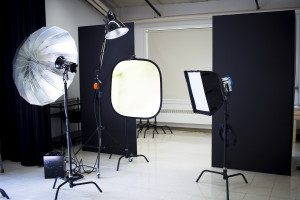This summer, art professor, Ryann Cooley, restructured the photography courses offered at Houghton College.
When Cooley came to Houghton in 2013 and began teaching photography there were only two courses offered, Foundations of Photography and Advanced Topics in Photography. Foundations of Photography, according to Cooley, is a black and white film class which “spent most of the time learning techniques through the chemistry, printing, and camera functions.”
Advanced Topics in Photography, however, focused more on elements of photography beyond the darkroom.
 Cooley, however, felt it was not particularly advanced. This largely had to do with the lack of time to teach more than just the basics. “There’s not enough time to really go into everything in any kind of detail. You’re kind of glazing over everything,” he said. “I wanted to offer more depth for people that really wanted more out of photography.”
Cooley, however, felt it was not particularly advanced. This largely had to do with the lack of time to teach more than just the basics. “There’s not enough time to really go into everything in any kind of detail. You’re kind of glazing over everything,” he said. “I wanted to offer more depth for people that really wanted more out of photography.”
According to Cooley, one of the new classes, Introduction to Digital Photography, is a better way to teach beginning photography. In Foundations of Photography, film was processed, or developed, the traditional way in the darkroom, making the process much longer. Cooley said, “You don’t get to see the results until you’ve processed, printed, and you finally get to look at it.” Variables like exposure, development, and printing of the film could affect the outcome of the photo. A student would not be able to see the results of a single photo until the week long printing process was completed.
The Introduction to Digital Photography class still teaches all the fundamentals of photography, but allows students to learn the same things they would have learned in Foundations of Photography, but a much faster pace. Cooley said, “I can do it in 2-3 weeks versus 7-8 weeks in the film class.”
This also allowed Cooley to bring in some of the topics typically learned in Advanced Topics in Photography. “So not only do they learn how to use the function of the camera, but they also get to learn how to make a good picture,” said Cooley. “I think it’s a much more fuller class to take things further.” The original black and white film class, Cooley says, will become more ‘exploratory,’ “it’s kind of more of a fine arts class because people aren’t using film so much, everything’s digital these days.” The Advanced Topics class will now serve as more of a thought based photography class, discovering the ramifications and effects that photographs have.
In addition to restructuring the photography courses, a new lighting studio was added to the inside of the Stevens Art Studios. A lighting studio is a space that allows for the creation, control, and modification of light in a photograph. Lighting, according to Cooley, is essential to photography, “Lighting is so fundamental to photography itself that I wanted to designate an entire course to just lighting.”
The lighting class, utilizes both the studio and natural, outside light. “The fall gives us a good range where we can learn how to use outdoor lighting and modify that lighting,” Cooley said. “Then we can also spend time indoors learning how to control the lighting and create the lighting, versus just the lighting we’re given through nature.”
Assistant professor of art and printmaking, Alicia Taylor, thinks the addition of the lighting studio will be beneficial for many students, “The lighting studio is really great opportunity for students to have experience in both a commercial setting and setting up their own dynamic photoshoots, whether it’s still life photography or portrait photography.” Taylor said, “It really expands the program to be more competitive with bigger schools that have a lot large facilities and more access to equipment.
Junior, Elizabeth Vigna, pursues photography in her free time and thinks the addition of classes will add variety and be helpful to many. He said, “Having a substitute for lighting during the winter time will be really useful, I had to teach myself, so taking that class would be really cool because there’s probably a lot of stuff I’ve missed.”
Lastly, the Professional Practices class, the last of the new photography classes, will focus on photography in the professional world. This entails learning the business side of running a photography business and creating a marketable portfolio.

3 replies on “Photo Classes Restructured”
[…] Photo Classes Restructured – everything’s digital these days.” The Advanced Topics class will now serve as more of a thought based photography class, discovering the ramifications and effects that photographs have. In addition to restructuring … […]
[…] Photo Classes Restructured – This summer, art professor, Ryann Cooley, restructured the photography … black and white film class, Cooley says, will become more ‘exploratory,’ “it’s kind of more of a fine arts class because people aren’t … […]
[…] Photo Classes Restructured – Foundations of Photography, according to Cooley, is a black and white film class which “spent most of the time learning techniques through the chemistry, printing, and camera functions.” Advanced Topics in … […]